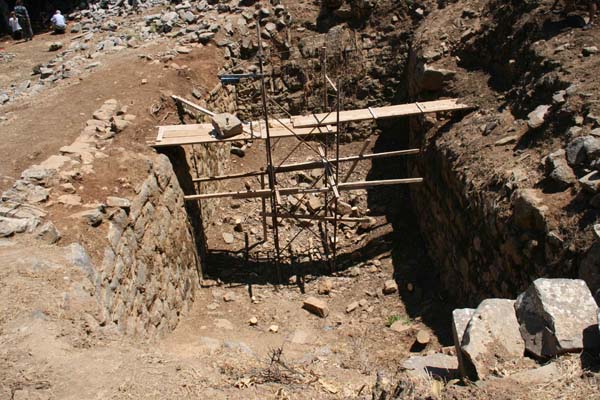Voyage to Crete: Dreros
by Eti Bonn-Muller
August 3, 2009
Today I forged eastward again to visit the site of Dreros, known from excavations earlier in the 20th century to have flourished between the Geometric and the late Hellenistic periods. I met up with the French-Greek team working there—led by Alexandre Farnoux and Vassiliki Zografakis—three weeks into a brand-new five-year project.
The team’s goals are to investigate and document the extent of the site, as well as to clean and restore it. In the coming years, they hope to determine the earliest occupation date (nearby, in a small necropolis, Late Minoan tombs have been found) and the course of its later history (up to Byzantine times). They are also looking to glean information about how an urban center like Dreros, spread across two mountaintops, functioned.
Inscriptions from the site state that Dreros was destroyed by enemies from another Cretan city-state called Lyttos in the late third century B.C. The team has already started to see tantalizing traces of the destruction level, which they had wanted to illuminate.
3
Inside the cistern, located just in front of the agora and the temple, archaeologists earlier in the 20th century discovered a number of important Archaic inions (ca. 650 B.C.) on stone—believed to have fallen there from the walls of the temple—including one of the oldest institutional laws in Greece.
Comments posted here do not represent the views or policies of the Archaeological Institute of America.









